-
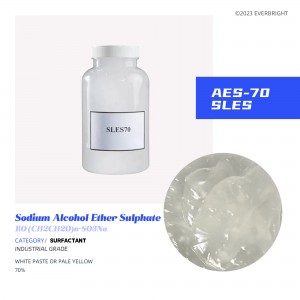
AES-70 / AE2S / SLES
AES e faigofie ona solu i totonu o le vai, faʻatasi ai ma le faʻamaʻiina lelei, susu, emulsification, faʻasalalau ma mea faʻafefeteina, lelei le mafiafia o mea, fetaui lelei, lelei le faʻaogaina o le biodegradation (tikeri faʻaleagaina e oʻo atu i le 99%), faʻafefeteina le fufulu mama o le a le faʻaleagaina le paʻu, maualalo le ita. i le pa'u ma mata, ose anionic surfactant sili ona lelei.
-

Urea
O se fa'aputuga fa'aola e aofia ai le kaponi, nitrogen, okesene ma le hydrogen, o se tasi o fa'alapotopotoga fa'aola e sili ona faigofie, ma o le fa'ato'aga autu o le nitrogen-o lo'o i ai le fa'ai'uga o le protein metabolism ma le decomposition i mammals ma nisi i'a, ma o le urea e fa'apipi'iina e ammonia ma carbon. dioxide i alamanuia i lalo o nisi tulaga.
-
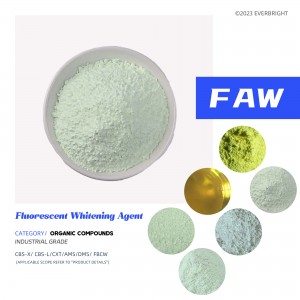
Su'i Fa'apa'epa'e (FWA)
O se faʻapipiʻi faʻatasi ai ma le maualuga tele o le quantum efficiency, i le faʻatonuga o le 1 miliona i le 100,000 vaega, lea e mafai ona faʻamaeʻaina lelei mea masani poʻo paʻepaʻe (e pei o ie, pepa, palasitika, paʻu).E mafai ona mitiia le moli violē ma le galu o le 340-380nm ma emit moli lanumoana ma se galu umi o le 400-450nm, lea e mafai ona faia lelei mo le samasama e mafua mai le faaletonu o le malamalama lanumoana o mea papaʻe.E mafai ona faʻaleleia le paʻepaʻe ma le susulu o mea paʻepaʻe.O le fluorescent whitening agent lava ia e leai se lanu po o le lanu samasama (lanu meamata) lanu, ma e masani ona faʻaaogaina i pepa, ie, vailaʻau faʻapipiʻi, palasitika, coatings ma isi pisinisi i le fale ma fafo.E 15 ituaiga fausaga faavae ma toetoe 400 fausaga kemikolo o vailaau pa'epa'e felanulanua'i ua uma ona gaosia.
-
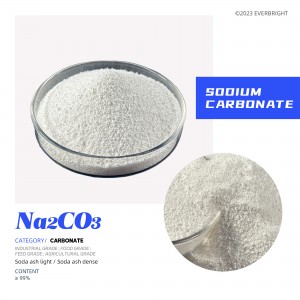
Sodium Carbonate
Pefu fa'afefiloi fa'a-organic, ae fa'avasegaina o le masima, ae le o le alkali.Sodium carbonate o se paʻepaʻe paʻepaʻe, leai se tofo ma leai se manogi, faigofie ona solu i le vai, vaifofo vai e malosi alkaline, i le ea susu o le a mitiia le susu clumps, vaega o le sodium bicarbonate.O le sauniuniga o le sodium carbonate e aofia ai le faʻaogaina o le alkali, le ammonia alkali process, le Lubran process, ma isi mea, ma e mafai foi ona faʻaogaina ma faʻamamaina e trona.
-

Ammonium Bicarbonate
Ammonium bicarbonate o se pa'epa'e pa'epa'e, granular, ipu tioata po'o tioata columnar, ammonia manogi.Ammonium bicarbonate o se ituaiga carbonate, ammonium bicarbonate o loʻo i ai le ammonium ion i le vailaʻau vailaʻau, o se ituaiga o masima ammonium, ma e le mafai ona tuʻu faʻatasi le masima ammonium ma le alkali, o lea e le tatau ona tuʻu faʻatasi le ammonium bicarbonate ma le sodium hydroxide poʻo le calcium hydroxide. .
-
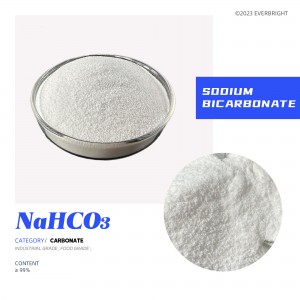
Sodium Bicarbonate
Fa'asoa fa'akomepiuta, pa'epa'e tioata pa'epa'e, leai se manogi, masima, solu ile vai.E pala lemu i le ea susu po o le ea vevela, e maua ai le carbon dioxide, lea e pala atoa pe a vevela i le 270 ° C. Pe a faʻaalia i le gaʻo, e malepe malosi, e maua ai le carbon dioxide.
-
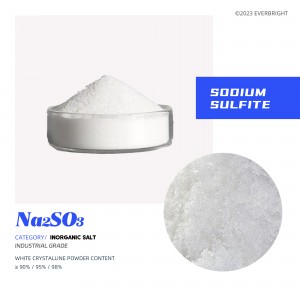
Sodium Sulfite
Sodium sulfite, pa'epa'e tioata pa'epa'e pa'epa'e, solu i le vai, e le mafai ona solu ile ethanol.O le chlorine ma le amonia e le mafai ona faʻaaogaina e masani lava ona faʻaaogaina e fai ma faʻamautu fibre fai, sui faʻamalama ie, faʻapipiʻi ata, deoxidizer bleaching vali, mea manogi ma faʻafefete faʻafefete, lignin e aveese ai le mea e fai ai pepa.
-
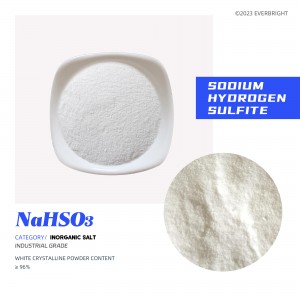
Sodium Hydrogen Sulfite
O le mea moni, o le sodium bisulfite e le o se tuufaatasiga moni, ae o se faʻafefiloi o masima, pe a faʻamavae i totonu o le vai, e maua ai se vaifofo e aofia ai ion sodium ma ions sodium bisulfite.E sau i foliga o tioata paʻepaʻe poʻo samasama-paʻepaʻe ma se manogi o le sulfur dioxide.
-
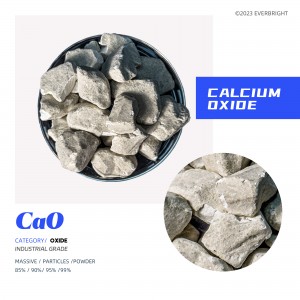
Calcium Oxide
O le lime vave e masani ona aofia ai le lime vevela, o le tausiga o le lime e sili atu le vevela e telegese, pe a toe fa'ama'a'a le pa'u lefulefu ma'a, o le a mafua ai ona ta'e fa'alautele ona o le fa'alauteleina o le matua.Ina ia faʻaumatia lenei afaina o le mu o le lime, e tatau foi ona "matua" le lime mo le tusa ma le 2 vaiaso pe a uma le tausiga.O le foliga e paʻepaʻe (pe efuefu, enaena, paʻepaʻe), amorphous, mitiia vai ma carbon dioxide mai le ea.O le calcium oxide e fegalegaleai ma le vai e fausia ai le calcium hydroxide ma tu'u ai le vevela.Solu i le vai acidic, le solu i le ava malosi.Mea fa'a'ala'au alkaline fa'aletino, fa'ailoga o lamatiaga a le atunu'u:95006.O le lime e fa'afeagai fa'ama'i ma le vai ma vave fa'avevela i le vevela i luga atu o le 100°C.
-

Patasoma Carbonate
O se mea inorganic, fa'amavae e pei o se pa'epa'e tioata pa'epa'e, solu i le vai, alkaline i le vai vaifofo, e le mafai ona solu i le ethanol, acetone, ma eteru.Malosi hygroscopic, fa'aalia i le ea e mafai ona mitiia le carbon dioxide ma vai, i le potassium bicarbonate.
-
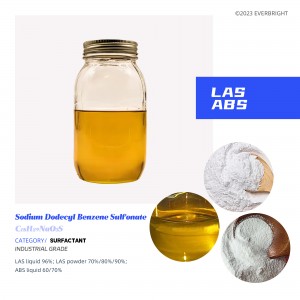
Sodium Dodecyl Benzene Sulfonate (SDBS/LAS/ABS)
O se mea e masani ona faʻaaogaina anionic surfactant, o se paʻepaʻe poʻo le malamalama samasama paʻu / flake mafiafia poʻo le lanu enaena viscous vai, faigata ona faʻafefeteina, faigofie ona faʻamavaeina i le vai, faʻatasi ai ma le faʻasologa o filifili (ABS) ma le fausaga filifili saʻo (LAS), le fausaga filifili lala e laiti i le biodegradability, o le a mafua ai le filogia o le siosiomaga, ma le fausaga saʻo filifili faigofie e biodegrade, o le biodegradability e mafai ona sili atu nai lo le 90%, ma le tikeri o le faaleagaina o le siosiomaga e itiiti.
-

Dodecylbenzenesulphonic acid (DBAS/LAS/LABS)
O le Dodecyl benzene e maua mai i le fa'asalaina o le chloroalkyl po'o le α-olefin ma le benzene.O le Dodecyl benzene o lo'o fa'afefeteina i le sulfur trioxide po'o le fuming sulfuric acid.Samasama mumu i le lanu enaena viscous vai, solu ile vai, vevela pe a fa'afefe ile vai.Laititi soluble i benzene, xylene, soluble i methanol, ethanol, propyl alcohol, eter ma isi solvents organic.O loʻo i ai galuega o le emulsification, faʻasalalau ma faʻamaʻi.







